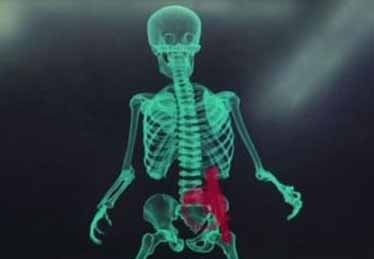TSA anti-terrorism measures more harmful than terrorism itself
The holiday season is in full swing, and that likely means travel for many of you. And travel often involves airports. And airports (at least here in the US) demand taking part in the TSA’s wonderful circus of security theater. In many airports, that means there is a good chance you’ll be asked to step through a full-body scanner.
You may have noticed that these same scanners were banned in Europe last month, due to health concerns over the ionizing radiation the machines employ. That might make you think twice about stepping into one, which is a perfectly valid response. However, this post isn’t really about the dangers of TSA backscatter scanners (there are already plenty of those), or whether or not you should opt out of a scan (ditto). I personally don’t believe that the health risk posed by the machines is serious enough that casual travelers need to realistically worry about those issues. Rather, I was more curious about the risk-reward relationship regarding them, and whether placing them in airports around the country made sense purely from a numbers standpoint.
Or, put more simply: is the potential benefit that we’re getting from these scanners in line with the health risk that they present (however small that risk may be)? I mean, surely somebody at the TSA thought about that, right? … Right?
So, first things first — what do these machines cost us (besides the wasted time and higher ticket prices to pay for them)? Basically, how likely are you to end up with cancer after stepping into one? There is some disagreement on the answer to that question, although even the machines’ supporters concede that the risk is not zero. According to the US Food and Drug Administration, the cancer risk is about 1 in 400 million per scan — this number is based on the amount of radiation that the government claims the scanners emit (1/10,000th of a chest x-ray). However, according to Arizona State University physics professor Peter Rez, the government radiation figure could not possibly be accurate given the scans that the machines produce. Rez published his findings in the Radiation Protection and Dosimetry journal earlier this year, and asserts that the actual cancer risk is closer to 1 in 20 million per scan. The scanners have been measured delivering 20 times the government-quoted radiation dose, which seems to support Rez’s findings.
Either way, the odds that you’re going to get cancer from stepping into a TSA scanner are pretty remote. Low enough that you can probably discount the risk entirely unless you’re subjected to scans on a daily basis. However, keep in mind that over 2 million Americans step onto commercial flights every single day, and even at 1-in-20-million odds, 40 unlucky people are getting cancer from these things every year if they’re adopted everywhere.
 But surely the benefit outweighs the cost, otherwise what would be the point? The scanners were introduced to prevent terrorists from blowing us up mid-flight — so what are your odds of that happening, anyway? According to the US Bureau of Transportation Statistics, there have been over 120 million commercial flights in the US since the year 2000. There have been successful terrorist attacks on exactly four of those flights. That puts your odds of dying in an airline terrorist attack at under 1 in 30 million. In other words, you’re probably not going to be blown up any time soon.
But surely the benefit outweighs the cost, otherwise what would be the point? The scanners were introduced to prevent terrorists from blowing us up mid-flight — so what are your odds of that happening, anyway? According to the US Bureau of Transportation Statistics, there have been over 120 million commercial flights in the US since the year 2000. There have been successful terrorist attacks on exactly four of those flights. That puts your odds of dying in an airline terrorist attack at under 1 in 30 million. In other words, you’re probably not going to be blown up any time soon.
If you’re still following along, you’ve probably realized that the odds of getting cancer from a TSA scanner aren’t that dissimilar to the odds of being victim to a terrorist. Yup, the scanners are about as dangerous as the terrorists — perhaps up to 50% more so. In other words, the TSA is subjecting travelers to a test that is more of a risk than the thing the test is designed to prevent. Genius.
So thanks, TSA, for essentially doubling the risk of death to terrorism-related causes for anyone that steps through your scanners. And making us wait in line and pay inflated ticket prices for the privilege. Never mind the absolute lunacy of jumping through such ridiculous hoops in an attempt to prevent something that has a negligible probability of occurring in the first place.
(And never mind the fact that there is significant evidence pointing to the fact that the machines don’t even work. Examples: 1 2 3)
Recent Comments